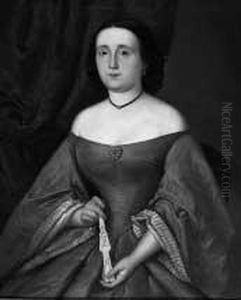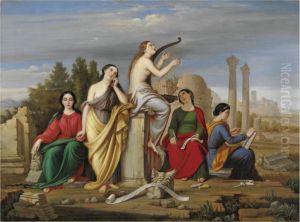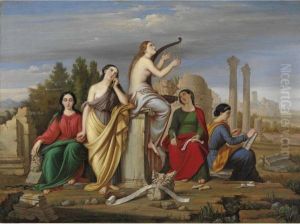Francesco Cogorno Paintings
Francesco Cogorno, also known as Cecco Bravo, was an Italian painter born in 1603 in Florence, Italy, and died in 1683 in Innsbruck, Austria. He is considered one of the most intriguing and less conventionally studied artists of the Baroque period. Cogorno's early life and training are not well-documented, but it is known that he was active in Florence and became associated with the Florentine school, where he developed his distinctive style.
Cogorno's work is characterized by its dynamic compositions, bold use of color, and the emotional intensity of the figures depicted. He was particularly noted for his skill in fresco and oil painting, contributing to the decoration of several churches and public buildings in Florence and its surroundings. His style reflects the transition from the High Renaissance to the more expressive and dramatic approaches of the Baroque era. Cogorno's art often explored religious themes, but he also painted mythological subjects and portraits, displaying versatility across genres.
Despite his talent, Francesco Cogorno did not achieve the same level of fame as some of his contemporaries, such as Caravaggio or Bernini. However, his works have gained more appreciation in recent years, with art historians recognizing his contribution to the development of Baroque art in Italy. Cogorno's legacy is that of an artist who, while perhaps not at the forefront of his time's artistic revolutions, provided a unique and valuable perspective on the evolving styles of the 17th century.
In the latter part of his life, Cogorno moved to Innsbruck in Austria, where he continued to work until his death in 1683. This period of his life is less documented, but it is known that he was appreciated at the court of the Habsburgs, which provided him with commissions until his final days. Today, Francesco Cogorno's works can be found in various museums and collections, appreciated for their vibrant energy and emotional depth, hallmarks of the Baroque movement.


